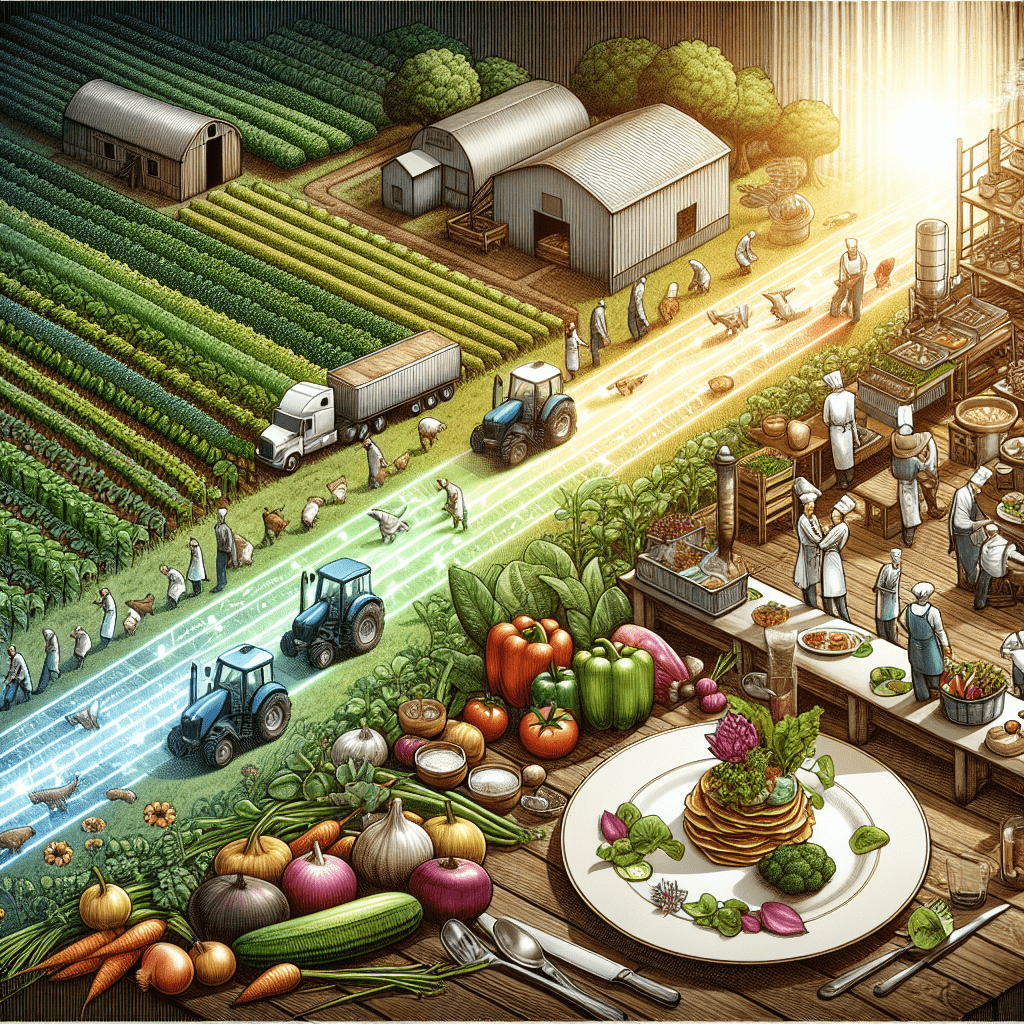[ad_1]
## From Farm to Fork: How Traceability is Changing the Culinary World
In today’s culinary world, the demand for transparency and sustainability is higher than ever. As consumers become more conscious of their dietary choices, the farm-to-fork movement has gained significant momentum. This movement is about knowing where our food comes from, how it’s produced, and its journey from the farm to our plates. At the heart of this movement lies traceability, a concept that is fundamentally changing the culinary landscape.
### The Concept of Traceability
Traceability, in the context of the food industry, is the ability to track the origin, production, and distribution process of food products. It ensures that consumers, chefs, and food businesses can verify the journey of food from its source to the final product. Traceability systems use a combination of technology, documentation, and standards to provide detailed information about food products. This includes information about the source of ingredients, batch numbers, processing data, and shipping details.
### The Impact of Traceability on the Culinary World
#### Ensuring Food Safety
One of the most significant benefits of traceability is its role in ensuring food safety. By tracing the origin and handling of food products, it becomes easier to identify and manage risks of contamination, adulteration, or foodborne illnesses. In the event of a food safety scare, traceability systems can quickly identify and isolate the affected products, minimizing health risks and economic losses.
#### Promoting Sustainability
Traceability fosters sustainability in the food supply chain. It enables consumers and businesses to make informed choices about the environmental impact of their food. By knowing the origin and production practices behind food products, individuals can choose to support local, organic, and ecologically responsible farming practices. This, in turn, promotes sustainable agriculture and reduces the carbon footprint associated with food production and transport.
#### Empowering Consumers
In the age of information, consumers are seeking more than just food to eat; they are looking for an experience and a connection to the food they consume. Traceability empowers consumers by providing them with the story behind their food. It allows them to make ethical and healthy choices based on the origins, ingredients, and sustainability practices behind their meals.
#### Enhancing Culinary Quality
For chefs and culinary professionals, traceability is a tool for enhancing the quality and authenticity of the dishes they create. Knowing the source and characteristics of their ingredients enables chefs to design dishes that truly reflect the terroir and craftsmanship behind each component. This not only elevates the dining experience but also supports local producers and traditional culinary practices.
### Challenges and Solutions
Despite its benefits, implementing traceability in the food supply chain faces several challenges. These include the costs associated with traceability systems, complexities in tracking products through the supply chain, and resistance from stakeholders who may be wary of transparency.
However, advancements in technology such as blockchain, IoT (Internet of Things), and cloud-based platforms offer promising solutions. These technologies can streamline traceability operations, making it easier and more cost-effective for stakeholders across the food supply chain to adopt transparent practices.
### The Future of Culinary Traceability
As technology evolves and consumer demand for transparency continues to grow, traceability is set to become a standard practice in the culinary world. It promises to bring about a new era of food safety, sustainability, and consumer empowerment. Chefs and food businesses that embrace traceability will not only meet the demands of informed consumers but also contribute to a more sustainable and ethical food system.
### FAQs About Traceability in the Culinary World
**Q: How does traceability contribute to food safety?**
A: Traceability contributes to food safety by providing a detailed record of a food product’s journey. This makes it easier to identify, isolate, and address issues related to contamination or foodborne illnesses, ensuring the safety of consumers.
**Q: Can traceability really impact environmental sustainability?**
A: Yes, traceability can significantly impact environmental sustainability by enabling consumers and businesses to make informed choices that favor environmentally friendly and sustainable agriculture practices, thus reducing the overall carbon footprint of food production.
**Q: Is traceability only important for high-end restaurants and gourmet food?**
A: No, traceability is important for all levels of the food industry, from fast food to high-end gastronomy. It benefits consumers by ensuring food safety, promoting sustainability, and enhancing the overall quality of food.
**Q: Are there any drawbacks to implementing traceability systems?**
A: While traceability systems offer numerous benefits, they also come with challenges such as the cost of implementation, the need for technical knowledge, and potential resistance from suppliers wary of transparency. However, many of these challenges can be mitigated through the use of advanced technologies and proactive stakeholder engagement.
**Q: How can consumers support traceability?**
A: Consumers can support traceability by choosing to purchase products from companies and establishments that prioritize transparency in their supply chains. Asking questions about the origin of food and supporting businesses that provide this information can also encourage wider adoption of traceability practices.
The push for traceability in the culinary world is more than a trend; it is a movement towards a more informed, sustainable, and safe food system. As this movement grows, it will continue to change the way we think about, produce, and consume our food, from farm to fork.
[ad_2]

Leave a Reply